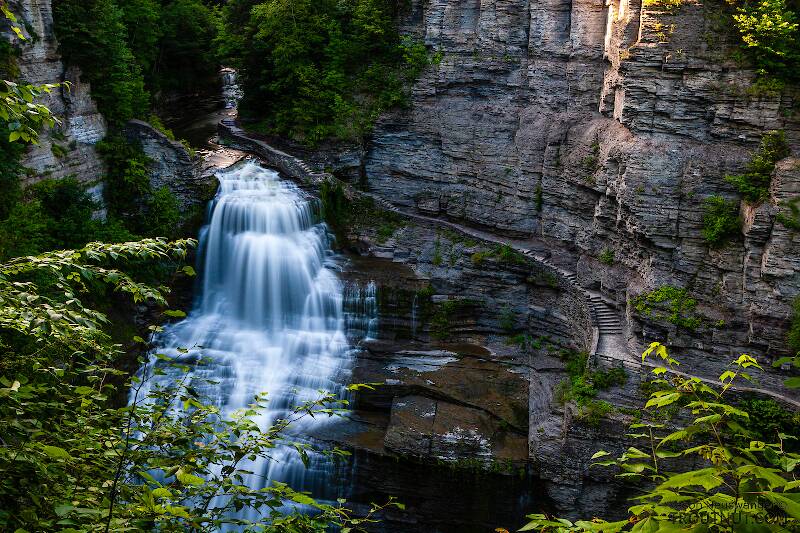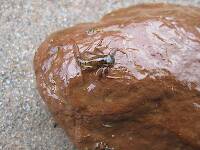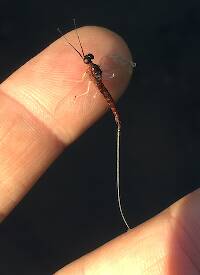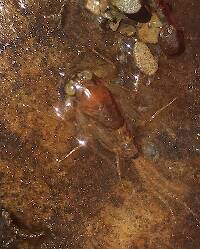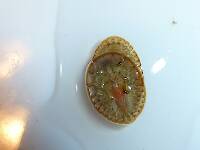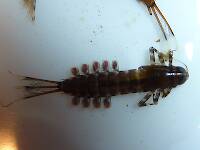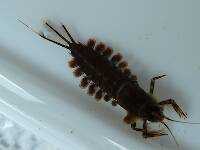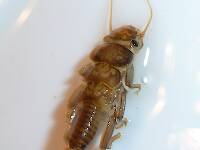
Salmonflies
Pteronarcys californica
The giant Salmonflies of the Western mountains are legendary for their proclivity to elicit consistent dry-fly action and ferocious strikes.
Featured on the forum

This specimen appears to be of the same species as this one collected in the same spot two months earlier. The identification of both is tentative. This one suffered some physical damage before being photographed, too, so the colors aren't totally natural. I was mostly photographing it to test out some new camera setting idea, which worked really well for a couple of closeups.

Troutnut is a project started in 2003 by salmonid ecologist Jason "Troutnut" Neuswanger to help anglers and
fly tyers unabashedly embrace the entomological side of the sport. Learn more about Troutnut or
support the project for an enhanced experience here.
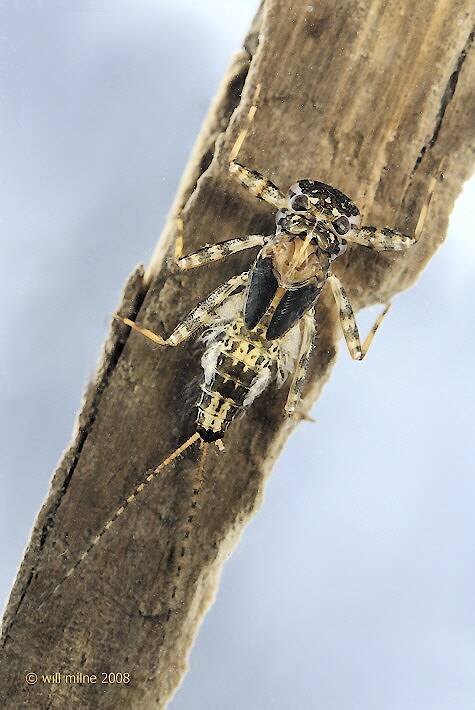
Willmilne on Jul 3, 2008July 3rd, 2008, 10:38 am EDT
Hi
Found some of these lovely nymphs while out - any suggestions as to species?
thanks
Will
Found some of these lovely nymphs while out - any suggestions as to species?
thanks
Will
GONZO on Jul 3, 2008July 3rd, 2008, 12:04 pm EDT
My first impression is that it is a Maccaffertium (formerly Stenonema) nymph. That said, however, you have some heptageniids up there with which I am not at all familiar. It is a very striking specimen and ripe to hatch (a "blackwing"). Perhaps Roger or Konchu can offer another opinion.
Taxon on Jul 3, 2008July 3rd, 2008, 7:15 pm EDT
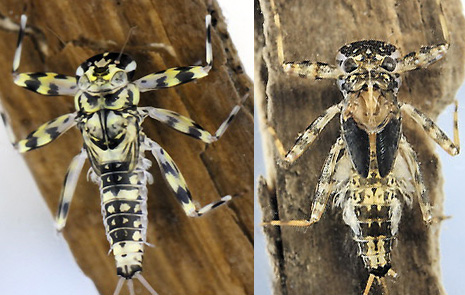
These are the two Heptageniid nymphs on Will's website. I arranged them similarly aligned for comparison purposes.
In late May, I suggested the one on the left was probably Leucrocuta maculipennis. My guess is that the one on the right may be either Heptagenia flavescens or Maccaffertium modestum. How's that for hedging?
In any event, Will certainly does have a talent for photographing aquatic insects.
Willmilne on Jul 4, 2008July 4th, 2008, 3:39 am EDT
Thanks for the suggestions on ID.So much to learn. I guess I have to start learning to photograph the key details and get a little more focused. I am at the moment simply taken with the beauty and subtle variations of color in these, sometimes at first glance , rather drab looking insects. Glad you are enjoying the pics Roger.
Would you think this is the same species at a different stage, the markings are very similar - it was collected at the same time. Much lighter and more yellow olive in tone and lacking the lower leg banding.
http://www.watersidemb.ca/heptanymph7b.jpg
cheers
Will
Would you think this is the same species at a different stage, the markings are very similar - it was collected at the same time. Much lighter and more yellow olive in tone and lacking the lower leg banding.
http://www.watersidemb.ca/heptanymph7b.jpg
cheers
Will
GONZO on Jul 4, 2008July 4th, 2008, 6:10 am EDT
Will,
The photo in the link does appear to be the same species, but not as "ripe" yet. Overall, I am leaning toward a Maccaffertium ID because the gills look more like that genus than Heptagenia to me.
By the way, I came across a recent article in the Journal of Insect Science that proposed a new species, Heptagenia whitingi (considered a sister taxon of H. flavescens). The dorsal photo included in the article appeared to match the markings of your other specimen (the one on the left in Roger's comparison) almost exactly, except that it is a paler version (probably due to preservation in alcohol). What first caught my attention was the mention of the large, pale rectangular markings on abdominal tergum 4 as an important diagnostic character. (However, please note the comment about H. adaequata in the larval diagnosis.) The other interesting aspect was the use of DNA "barcoding." It's just a thought, but you can find the article at:
http://insectscience.org/7.63/
(I wish I could make that a direct link, but I can't seem to get BBCode to work here. My computer skills suck, so I'm probably doing something wrong.)
The photo in the link does appear to be the same species, but not as "ripe" yet. Overall, I am leaning toward a Maccaffertium ID because the gills look more like that genus than Heptagenia to me.
By the way, I came across a recent article in the Journal of Insect Science that proposed a new species, Heptagenia whitingi (considered a sister taxon of H. flavescens). The dorsal photo included in the article appeared to match the markings of your other specimen (the one on the left in Roger's comparison) almost exactly, except that it is a paler version (probably due to preservation in alcohol). What first caught my attention was the mention of the large, pale rectangular markings on abdominal tergum 4 as an important diagnostic character. (However, please note the comment about H. adaequata in the larval diagnosis.) The other interesting aspect was the use of DNA "barcoding." It's just a thought, but you can find the article at:
http://insectscience.org/7.63/
(I wish I could make that a direct link, but I can't seem to get BBCode to work here. My computer skills suck, so I'm probably doing something wrong.)
Dhfunk on Nov 15, 2008November 15th, 2008, 5:51 am EST
H. whitingi seems reasonable for the one on the left. The one on the right looks a perfect match for Stenonema femoratum. If you were to flip the specimen over and find a series of dark sublateral spots on each side of the abdominal segments, that would nail it.
GONZO on Nov 15, 2008November 15th, 2008, 7:30 am EST
Nice of you to pick up on this one, David. I sometimes forget to consider femoratum now that it is stranded on its own. The illustration in Spieth (of "S. femoratum tripunctatum," 1947) and especially the photo in Lewis (of "S. tripunctatum," 1974) do look very much like Will's other specimen. Thanks for pointing things in the right direction!
Quick Reply
Related Discussions
Topic
Replies
Last Reply
13
Jun 13, 2012
by Brookyman
by Brookyman
3
Jun 27, 2018
by Konchu
by Konchu

